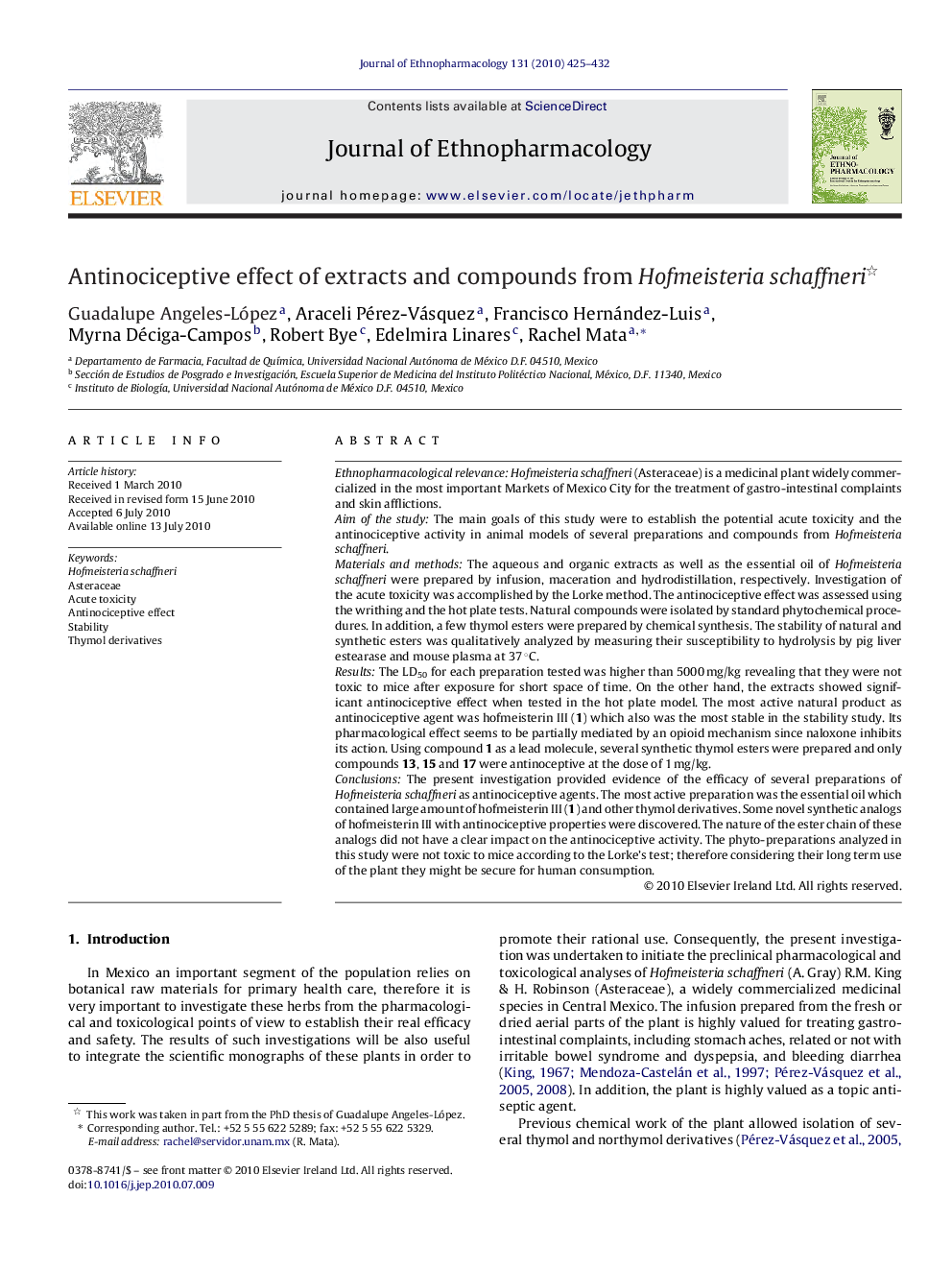| کد مقاله | کد نشریه | سال انتشار | مقاله انگلیسی | نسخه تمام متن |
|---|---|---|---|---|
| 2545996 | 1124012 | 2010 | 8 صفحه PDF | دانلود رایگان |

Ethnopharmacological relevanceHofmeisteria schaffneri (Asteraceae) is a medicinal plant widely commercialized in the most important Markets of Mexico City for the treatment of gastro-intestinal complaints and skin afflictions.Aim of the studyThe main goals of this study were to establish the potential acute toxicity and the antinociceptive activity in animal models of several preparations and compounds from Hofmeisteria schaffneri.Materials and methodsThe aqueous and organic extracts as well as the essential oil of Hofmeisteria schaffneri were prepared by infusion, maceration and hydrodistillation, respectively. Investigation of the acute toxicity was accomplished by the Lorke method. The antinociceptive effect was assessed using the writhing and the hot plate tests. Natural compounds were isolated by standard phytochemical procedures. In addition, a few thymol esters were prepared by chemical synthesis. The stability of natural and synthetic esters was qualitatively analyzed by measuring their susceptibility to hydrolysis by pig liver estearase and mouse plasma at 37 °C.ResultsThe LD50 for each preparation tested was higher than 5000 mg/kg revealing that they were not toxic to mice after exposure for short space of time. On the other hand, the extracts showed significant antinociceptive effect when tested in the hot plate model. The most active natural product as antinociceptive agent was hofmeisterin III (1) which also was the most stable in the stability study. Its pharmacological effect seems to be partially mediated by an opioid mechanism since naloxone inhibits its action. Using compound 1 as a lead molecule, several synthetic thymol esters were prepared and only compounds 13, 15 and 17 were antinoceptive at the dose of 1 mg/kg.ConclusionsThe present investigation provided evidence of the efficacy of several preparations of Hofmeisteria schaffneri as antinociceptive agents. The most active preparation was the essential oil which contained large amount of hofmeisterin III (1) and other thymol derivatives. Some novel synthetic analogs of hofmeisterin III with antinociceptive properties were discovered. The nature of the ester chain of these analogs did not have a clear impact on the antinociceptive activity. The phyto-preparations analyzed in this study were not toxic to mice according to the Lorke's test; therefore considering their long term use of the plant they might be secure for human consumption.
Figure optionsDownload as PowerPoint slide
Journal: Journal of Ethnopharmacology - Volume 131, Issue 2, 15 September 2010, Pages 425–432